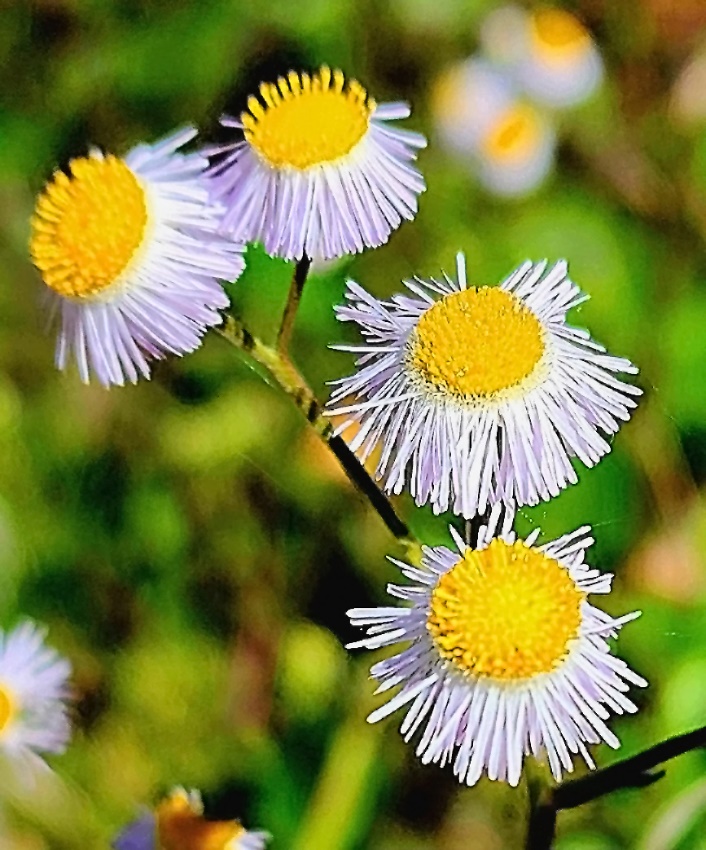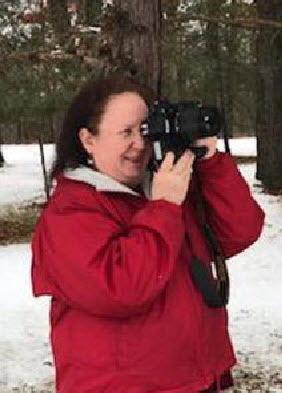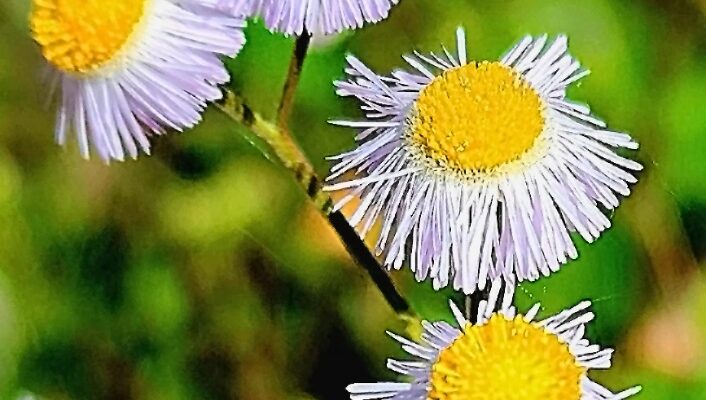Rural Perspectives
Fleabane daisies are tiny, tall, and prevalent in spring
by Diane Constable

Found in fields and along roadsides, the flowers on tiny fleabane daisies are no bigger than a nickel, but their stems can grow from one to three feet long. Photo credit: Diane Constable
Native plant Daisy Fleabane (Erigeron annuus) blooms in late spring and is found in fields, recently disturbed areas, and along our roadsides.
The fleabane belongs to the composite family of flowers and is related to asters. The white rays, or outer flowers, are not viable. They surround the yellow center, which contains up to 100 tightly clumped individual flowers called florets. The complete flower is about the size of a nickel. The light green leaves are about four inches long and one inch wide and are alternately placed along the thin stem that measures from one to three feet long.
Fleabane daisies spread easily by seed and bloom most of the summer. They like sunlight and slightly moist soil but will grow in tough places, such as freshly disturbed soil and building sites. This has earned it the status of a “pioneer flower” because of its ability to grow and improve soil unfit for other plants. They also complement gardens and wildflower gardens.
A variety of insects are attracted to these daisies, including bees, small wasps and butterflies, which feed on its sap. Deer and rabbit will feed on the plant. Larvae of grasshoppers, some beetles, and crickets also feed on this plant.
Native Americans have used fleabane daisies to make a poultice for treating wounds and as an astringent.
Fun Fact: The early pioneers called the plant “fleabane” because they believed it repelled fleas. They would stuff mattresses with it and hang sprigs in the house. Unfortunately, over time, this theory has been disproven; the plant does not repel fleas.
 As an avid photographer, Diane Constable regularly puts her formal education in both nature and photography to good use. Diane also enjoys gardening and her dogs and serves on the board of the Ann Arbor Dog Training Club.
As an avid photographer, Diane Constable regularly puts her formal education in both nature and photography to good use. Diane also enjoys gardening and her dogs and serves on the board of the Ann Arbor Dog Training Club.


